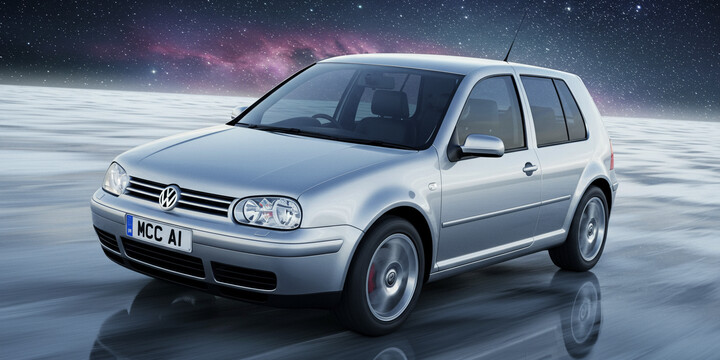
VOLKSWAGEN GOLF (2004-09) 3DR HATCHBACK 2.0 SDI S
The VOLKSWAGEN GOLF (2004-09) 3DR HATCHBACK 2.0 SDI S is a popular choice among UK drivers seeking a reliable, practical, and stylish hatchback. As part of Volkswagen's renowned Golf lineup, this model offers a balance of everyday usability and solid performance, making it ideal for commuters, small families, or first-time drivers. Its compact 3-door design is handy for city driving and parking, while the 2.0 SDI engine is known for efficient fuel economy and low running costs—appealing qualities for those looking for an economical yet dependable vehicle.
What sets the Volkswagen Golf (2004-09) 3DR HATCHBACK 2.0 SDI S apart from its rivals is its reputation for build quality, comfort, and driver satisfaction. With over 38 recorded lookups on MyCarCheck.com and an average of nearly 9,000 miles driven annually by owners, this model demonstrates its practicality and frequent use across the UK. Its recognizable design, combined with its reputation for reliability, makes it a well-rounded choice for anyone considering a used car in the small hatchback segment. Whether for daily commuting or city errands, the Volkswagen Golf 2.0 SDI S remains a notable and trusted option in its class.

average use

Based on the recent mileage data for the Volkswagen Golf (2004-09) 3-door hatchback 2.0 SDI S, the most common recorded mileage ranges are between 130,000 to 140,000 miles and 150,000 to 160,000 miles, each accounting for 21.4% of the vehicles. Other notable ranges include 100,000 to 110,000 miles (7.1%), 80,000 to 90,000 miles (7.1%), and 140,000 to 150,000 miles (14.3%). Lower mileage readings such as 0 to 10,000 miles are relatively rare at 7.1%, as are high mileage ranges like 180,000 to 190,000 miles (3.6%) and 300,000 to 310,000 miles (3.6%). These figures suggest that the majority of these vehicles tend to accumulate between 130,000 and 160,000 miles before being recorded, indicating typical usage patterns for this model age.

vehicle values

The data indicates that the majority of private sale prices for the Volkswagen Golf (2004-2009) 3-door hatchback 2.0 SDI S are concentrated in the £0 to £1,000 range, accounting for approximately 89.3% of the sales. Only a small portion, around 10.7%, falls within the £1,000 to £2,000 range. This suggests that most private sales of this model tend to be at lower price points, likely reflecting the vehicle's age, market demand, and condition factors typical for cars in this category.

production years

The data indicates that all examined Volkswagen Golf (2004-09) 3DR Hatchback 2.0 SDI S vehicles from this sample were manufactured in the year 2004. This suggests a limited manufacturing period within that model range, at least based on the current data set.

colour popularity

Based on the data for the main paint colour of the Volkswagen Golf (2004-09) 3DR Hatchback 2.0 SDI S, black is the most common colour, accounting for 50% of the vehicles in the sample. Silver is the next most prevalent at approximately 17.9%. Other notable colours include blue (14.3%) and grey (7.1%). Less frequently observed colours are purple, cream, and red, each representing around 3.6%. This highlights a strong preference for classic, neutral colours such as black and silver among this vehicle model.

ownership cycle

The data shows that the most common number of registered keepers for these Volkswagen Golf models is 7, accounting for 21.4% of the vehicles. Keepers are distributed across a range from 2 to 13, with smaller percentages for higher keeper counts. Notably, a significant portion—around 45.5%—has between 3 and 7 keepers, indicating moderate vehicle ownership turnover. The presence of vehicles with as many as 13 keepers suggests some vehicles have experienced multiple changes in ownership, which could be relevant for assessing vehicle history or ownership stability.

engine choices

The data indicates that for the Volkswagen Golf (2004-09) 3DR Hatchback 2.0 SDI S, the majority of vehicles (92.9%) are equipped with an engine capacity of 2000cc, with a small portion (7.1%) having a slightly smaller engine size of 1968cc. Notably, all vehicles in this sample are powered by diesel fuel, reflecting a 100% diesel usage among these models. This suggests a strong preference or market trend toward diesel engines in this particular model and period.












